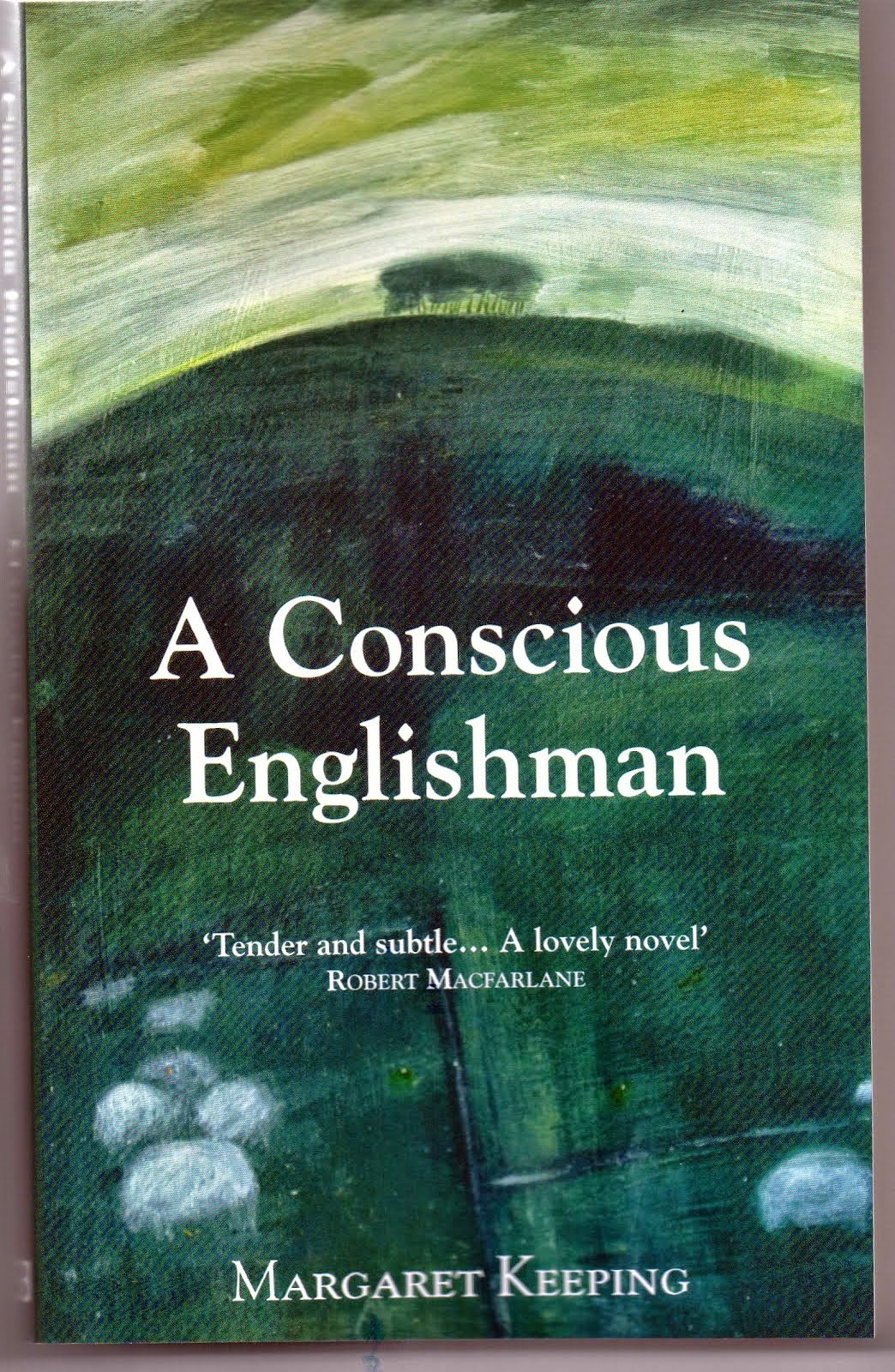1. Leddington and Dymock, in summer and autumn.
My purpose in visiting: observing, absorbing and imagining the places he knew and trying to recreate them in the reader's mind.
Part One of A Conscious Englishman is set in Leddington(now spelt Leadington), near Ledbury, with excursions to Dymock, May Hill near Gloucester and the Malvern Hills. I paid four visits to the area, two of them with Friends of The Dymock poets, two separately. It is farming or market gardening country with orchards and copses still surviving alongside some over-large arable fields with the most startling red soil. In Dymock especially, half-timbered white-rendered houses stand, while most cottages and farm-houses are of mellowed brick clearly reflecting the red-rust of the area's clay.
The Thomas family rented a room in a farm called Oldfields which still exists but is greatly altered and enlarged. I'm so sorry to say I did photograph it years ago but all those photos are lost- probably I hadn't even heard of blogs then. But there is a good picture available of the Frosts' rented cottage, Little Iddens. I walked the few hundred yards across a field between the two houses several times, thinking of how often the two families, and especially Edward and Robert, walked that way. Eleanor Farjeon stayed for a few days at a farm called Glyn Iddens, just across the lane.
Dymock
|
Dymock daffodils |
The area between May Hill and the Malvern Hills is most famous for its wild daffodils, which once grew everywhere in the meadows and woods. There are still many places where wild daffodils can be seen in late March and early April and Dymock is one |
There are two marked footpaths, the Poet's Paths, which start at the church, Dymock.
The first heads east of Dymock in an 8-mile figure of eight that passes Abercrombie’s cottage,the Gallows, which features in the autumn chapters as the Frosts had moved there. The second is north of Dymock in a figure of eight that passes near Frost’s, Thomas’s and Gibson’s cottages.
| St Mary's Dymock. The lych gate allows Edward and Robert a place to rest: |
the street. Beauchamp Green, with its row of lime trees leading up from the road to the lych gate, invited them to rest. They sat for a while under the silvered oak of the lych, looking down the valley. ‘You should have seen it early last April,’ Robert said. ‘A torrent of little yellow daffodils tumbling down to the brook. Beautiful.’
Two
gypsies came up to them, a young woman smoking a clay pipe, with a baby in her
brown shawl, and a thin young man with a concertina. The woman asked for money
for the baby, but they’d scarcely any money and what they had was for cider at
the Beauchamp Arms. Seeing Edward with his pipe she asked if he could spare half
a pipe of tobacco. He looked long at her and smiled. Her brown fingers dipped
delicately into the leather pouch he held out to her as she gazed back at him.
Then she laughed, waved and went away, gracefully swaying across the green with
the baby on her hip. "
The Malverns




